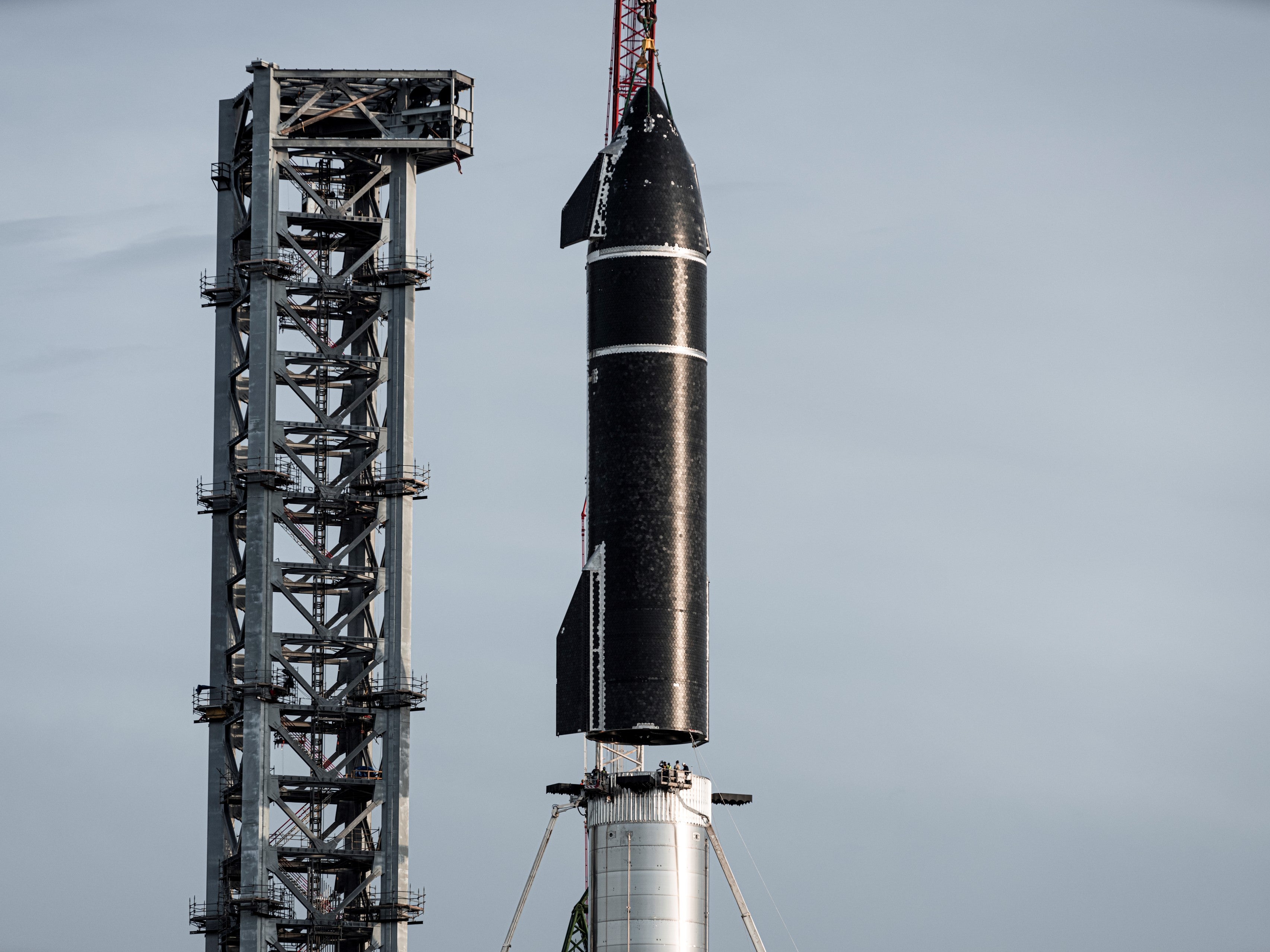SpaceX will use ‘robot chopsticks’ to catch massive Starship rocket, Elon Musk says
‘Mechazilla’ will catch booster for Mars-bound rocket
Your support helps us to tell the story
From reproductive rights to climate change to Big Tech, The Independent is on the ground when the story is developing. Whether it's investigating the financials of Elon Musk's pro-Trump PAC or producing our latest documentary, 'The A Word', which shines a light on the American women fighting for reproductive rights, we know how important it is to parse out the facts from the messaging.
At such a critical moment in US history, we need reporters on the ground. Your donation allows us to keep sending journalists to speak to both sides of the story.
The Independent is trusted by Americans across the entire political spectrum. And unlike many other quality news outlets, we choose not to lock Americans out of our reporting and analysis with paywalls. We believe quality journalism should be available to everyone, paid for by those who can afford it.
Your support makes all the difference.SpaceX will attempt to catch a massive rocket using “robot chopsticks”, according to Elon Musk.
The audacious plan could be carried out later this year during a major test of the Mars-bound Starship craft, which will see it blasted into orbit by a Super Heavy booster rocket.
The so-called chopsticks refer to mechanical arms attached to SpaceX’s launch tower – named ‘Mechazilla’ by Mr Musk – which will help guide the booster rocket back down onto the pad.
This system could eventually allow for rapid reusability and allow for multiple Starship launches in a single day, though chances of early success are far from guaranteed.
“SpaceX will try to catch largest ever flying object with robot chopsticks,” Mr Musk tweeted on Monday. “Success is not guaranteed, but excitement is.”
In a series of subsequent tweets, the SpaceX boss said the robotic arms will be equipped with tank tracks in order to “slide” the booster back out to line up with the orbital pad.
There have been several high-altitude Starship tests this year – all without the booster attached. All but one of them ended in fiery explosions.

SpaceX briefly assembled the biggest ever rocket at its Starbase facility in Boca Chica, Texas, earlier this month, demonstrating the scale of the fully stacked Starship craft.
The two segments – the Super Heavy booster rocket on the bottom and the Starship craft on the top – measured roughly 120m (400ft) when connected together.
Capable of delivering around 100,000kg to low Earth orbit, the combined Starship rocket will be capable of delivering around 70 meganewtons of thrust off the pad – approximately double that of Apollo’s famous Saturn V rockets that helped launch humans to the Moon.
SpaceX is yet to set a date for the next major test of its Starship prototype, which will see it fly from Texas to Hawaii in a 90-minute flight, though it is expected to take place within the coming weeks or months.
Join our commenting forum
Join thought-provoking conversations, follow other Independent readers and see their replies
0Comments